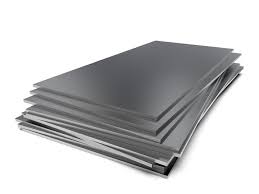Shandong Qilu lndustrial Co.,Ltd.
Common Challenges When Working with Steel Flange Plates
Introduction

Steel flange plates are critical components in industrial piping systems, used to connect pipes, valves, and equipment. Their reliability and performance are essential for the safe and efficient operation of various industries. However, these components face numerous challenges from manufacturing through to maintenance. This blog delves deeper into these challenges, offering practical insights and solutions to ensure the optimal functionality of steel flange plates.
Manufacturing Challenges
Manufacturing steel flange plates involves several critical considerations to achieve high-quality products:
- Material Selection: Choosing the right steel alloy is crucial to meet mechanical requirements, corrosion resistance, and operational conditions. Common materials include carbon steel, stainless steel, and alloy steel, each offering unique properties suitable for different applications.
- Dimensional Precision: Ensuring dimensional accuracy is essential to guarantee proper fitment and alignment with mating components. Variations in dimensions can lead to misalignment, stress concentrations, and potential leakage points.
- Surface Preparation: Achieving the correct surface finish is crucial to prevent corrosion and ensure effective sealing with gaskets. Surface treatments such as grinding, polishing, and coatings play a vital role in enhancing durability and performance.
- Quality Assurance: Implementing robust quality control measures throughout the manufacturing process helps detect defects early, ensuring compliance with industry standards and specifications.
Installation Issues
Proper installation practices are critical for the functionality and integrity of steel flange plates:
- Alignment and Fit-Up: Ensuring precise alignment of flange bolt holes with corresponding equipment and pipes minimizes stress on the flange and enhances sealing effectiveness.
- Bolt Tightening: Applying the correct torque to flange bolts is essential to achieve proper gasket compression without damaging the flange or gasket material. Under or over-tightening can lead to leakage and compromised performance.
- Gasket Selection: Choosing the appropriate gasket material based on temperature, pressure, and chemical compatibility is crucial for maintaining a reliable seal over the flange’s service life.
Operational Considerations
During operation, steel flange plates encounter various challenges that impact their performance:
- Corrosion Protection: Implementing corrosion prevention strategies such as coatings, cathodic protection, or using corrosion-resistant alloys helps extend the lifespan of flange plates and prevents leaks.
- Temperature and Pressure Management: Managing fluctuations in temperature and pressure within the piping system is essential to avoid stress on flange joints, which can lead to leaks or failures.
- Vibration and Fatigue Resistance: Addressing vibration-induced fatigue and stress corrosion cracking through design considerations and periodic inspections helps maintain the structural integrity of flange plates.
Maintenance and Inspection
Regular maintenance and inspection are critical to ensure the longevity and reliability of steel flange plates:
- Routine Inspections: Establishing regular inspection schedules to identify early signs of wear, corrosion, or mechanical damage allows for timely maintenance and replacement of components.
- Bolt Maintenance: Periodically checking bolt tightness and integrity ensures proper gasket compression and prevents leaks that could compromise system performance.
- Surface Protection: Applying protective coatings or treatments during maintenance intervals helps mitigate corrosion and extends the operational life of steel flange plates.
Comparison of Steel Flange Plate Materials

| Material Type | Advantages | Disadvantages |
|---|---|---|
| Carbon Steel | Cost-effective, readily available | Susceptible to corrosion without coatings |
| Stainless Steel | Excellent corrosion resistance | Higher cost compared to carbon steel |
| Alloy Steel | High strength and corrosion resistance | More expensive and may require special welding procedures |
Conclusion
Steel flange plates are essential components in industrial piping systems, but they are subject to various challenges throughout their lifecycle. By addressing manufacturing, installation, operational, and maintenance challenges proactively, industries can enhance the reliability, efficiency, and safety of their piping systems. Understanding these challenges and implementing best practices ensures optimal performance and longevity of steel flange plates in diverse operational environments.
FAQ
Q: How can I prevent corrosion on steel flange plates?
A: Implementing protective coatings, choosing corrosion-resistant alloys, and performing regular inspections for signs of corrosion are effective strategies.
Q: What should I consider when selecting gaskets for steel flange plates?
A: Factors such as temperature range, pressure rating, chemical compatibility with the fluid or gas being transported, and the flange surface finish are crucial for gasket selection.
Q: Why is dimensional accuracy important in steel flange plate manufacturing?
A: Precise dimensions ensure proper fit-up and alignment, which are essential for effective sealing and preventing leaks in piping systems.
